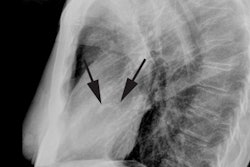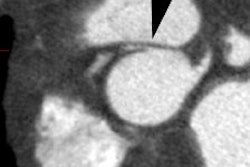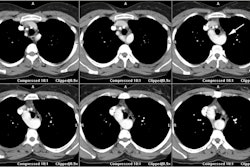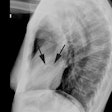AJR Am J Roentgenol 2001 Dec;177(6):1429-35
Quantification of coronary artery calcium using multidetector CT and a
retrospective ECG-gating reconstruction algorithm.
Horiguchi J, Nakanishi T, Ito K.
OBJECTIVE: The purpose of our study was to evaluate the quality of and motion
artifacts on multidetector CT scans and to compare the results with those of and
on electron beam CT scans for the assessment of coronary calcium scores.
MATERIALS AND METHODS: First, 20 volunteers were scanned using multidetector CT.
We compared the signal-to-noise ratio in the heart, motion artifacts at the
heart border, and the highest CT values in the regions of the coronary arteries
using single-sector and multisector reconstruction algorithms. Next, 60 patients
with coronary calcified deposits underwent both multidetector CT and electron
beam CT. We compared coronary calcium scores determined with multidetector CT
using the two algorithms (thresholds of 90 and 130 H) with those determined
using electron beam CT. RESULTS: The signal-to-noise ratio was higher and motion
artifacts were reduced when we used the multisector algorithm. The highest CT
value in the region of the coronary arteries exceeded 90 H in one of 55 arteries
on the multisector algorithm images and 17 of 55 arteries on single-sector
algorithm images (chi-square test, p < 0.01). In coronary calcium scoring,
correlation coefficients ranged from 0.920 to 0.992 (Pearson's product moment)
and from 0.932 to 0.969 (Spearman's rank correlation coefficient). CONCLUSION:
Multidetector CT with a retrospective ECG-gating algorithm (multisector
reconstruction) produced cardiac images with fewer motion artifacts and showed a
high correlation with coronary calcium scores determined using electron beam CT.
Therefore, multidetector CT is a potential tool for coronary calcium scoring.






